Hydrangea Polistar
Among the variety of paniculate hydrangeas, “Polestar” (“Polar Star”) deserves special attention. The variety is the most dwarf representative of its species in the world, ideal for growing on open balconies and terraces.
Description of hydrangea paniculata Polistar
Hydrangea Polistar is a dwarf compact bush with a spherical shape. The shoots are strong, erect, bright red in color. The leaves are dark green, in autumn they acquire a cherry-burgundy hue, and are small. The surface of the leaf plate is rough.
The inflorescences are round, consisting of fertile (fruit) and sterile flowers. Fertile flowers, like small beads, emit a honey aroma, attracting insects. In autumn they turn burgundy.
|
Greenish-lime color of the petals of the “Polar Star” at the beginning of dissolution |
Polistar blooms earlier than the earliest representatives of ordinary paniculate hydrangeas. It produces buds already in May and begins to actively bloom in early June. The flowers are shaped like a star. At the peak of flowering, almost no shoots or leaves are visible.
Important! "Polar Star" blooms on the shoots of the current year. Buds appear in the first year of planting a 5-year-old seedling.
Features of Polestar hydrangea
Hydrangea "Polystar" has a rich list of positive features, so it has practically no competitors:
- The plant is low, ultra-compact.
- Do not prune like regular paniculate hydrangeas.
- During abundant flowering, you can notice the glow emanating from the petals.
- The crop quickly produces new shoots and increases green mass.
- The variety is one of the earliest flowering, which makes for a long wave of flowering.
- Hydrangea does not require shelter for the winter due to its small growth; it is perfectly covered by snow.
- All above-ground parts are highly decorative.
- Not damaged by diseases and pests.
|
During vigorous flowering, leaves and shoots are not visible |
Planting hydrangeas in the ground
Place the seedling in open areas, with diffused sunlight, protected from drafts or in partial shade. The midday heat should not hit the crop.
In spring, a plant with dormant buds is planted already in April, in fairly cold soil. If the seedling has buds or shoots have begun to grow, wait until the soil warms up and the return frosts end.
When planting hydrangeas in the fall, in the regions of the Urals and Siberia, young bushes are covered with lutrasil.
Before the procedure, the seedling is well watered. You can soak it in a bucket of water with the addition of root formation stimulator “Kornevin”.
- When it comes to the size of the planting hole, they are guided by the volume of the root system. Planting depth in the ground at the level of the root collar.
- If the soil is medium loam, closer to heavy, prepare a soil mixture by mixing in equal parts:
- rotted humus;
- garden soil;
- high peat;
- sand
- add 50-60 g. superphosphate, 30-40 gr. potassium sulfate.
If the site has sandy or sandy loam soil, leavening agents in the form of sand or vermiculite are not added to the substrate.
- The bottom of the planting pit is filled with expanded clay. If the soil is light, drainage is not necessary.
- The hole is half filled with soil mixture, and a watering can (10 liters) is poured.
- Planted in the hole in the center, filling the voids on the sides.The seedling is lightly pressed with your hand to remove air from the roots.
- Water the tree trunk abundantly and mulch it.
|
Planting a hydrangea seedling in spring |
Important! When planting in spring, seedlings must be shaded.
Rules for caring for hydrangea Polistar
Competent agricultural technology will allow hydrangea to develop to its full potential, demonstrating its many advantages to the owner.
Watering
Hydrangea Polistar loves a humid environment. It is optimal to pour a bucket of water under the bush 3 times a week. During periods of prolonged rains, irrigation is stopped; in hot weather, the amount of watering is increased.
Top dressing
With the beginning of sap flow (March, April), nitrogen-containing organic matter is added. Bird droppings (300 g) are diluted in 10 liters of water, 0.5 liters are poured under one plant.
To quickly set buds, in June they give potassium sulfate (40 g per bush), superphosphate (60 g).
For a long wave of flowering, urea is added to superphosphate and potassium sulfate in the summer. Substances are taken at the rate of 35:35:25 grams, respectively, dissolved in 10 liters of water, and applied one liter per seedling.
At the end of summer, nitrogen-containing additives are stopped. They begin to prepare for winter using a phosphorus-potassium mixture.
Important! Fertilizers are applied to pre-moistened soil. The compounds are 100% absorbed by the plant and will not burn the root system of the seedling.
Video about growing paniculate hydrangeas in pots:
Trimming
This hydrangea variety goes against all the rules for pruning regular paniculate hydrangeas (the more you prune, the larger the blooms will be). Breeders warn Polystar owners against low pruning. It is recommended to remove dried flower stalks in the fall. Each cut off faded cap will produce 3-4 new shoots next season.In the spring, it is recommended to carry out sanitary treatment by removing thin, crooked, broken branches. Anti-aging pruning is carried out only on old specimens, removing “to zero” all decrepit side shoots.
|
When pruning, only faded panicles are cut off |
How does hydrangea propagate?
Like all paniculate hydrangeas, “Polestar” reproduces excellently by layering and cuttings.
By layering
In early spring, before buds form, a strong shoot close to the soil is buried next to the bush, making an incision in the bark at the point of contact with the ground. The upper part of the shoot is directed vertically upward, tied to a peg, the lower part is pressed with pins or a stone. The place of future rooting is sprinkled with earth and watered. In the fall, the cuttings are separated, dug in, and planted in the garden in the spring. They are planted in a permanent place after a year.
Cuttings
Cuttings are cut on warm spring days and during the summer from green, powerful, side shoots. The segment should have 2-3 internodes. The top is cut at an angle of 90°, the lower cut is oblique, 45°. If there are leaves, the lower ones are removed, the rest are shortened by half. The lower sections of the cuttings are dusted with “Kornevin” or soaked in “Epin”. Planted in a light soil mixture of sand and peat (1:2), covered with film or a transparent lid. The nursery is installed in a warm, shaded place, periodically ventilated and watered. Rooted cuttings are planted in a new place and covered for the winter.
|
Rooting cuttings |
Important! A miniature crop with short shoots does not allow obtaining a large number of cuttings.
Don't forget to read:
Frost resistance of the Polestar variety and preparation for winter
The crop can withstand temperatures down to -30°C and winters well without shelter even in regions with harsh climates. It is enough to insulate the tree trunk circle by increasing the layer of mulch. Only young, autumn-planted specimens provide shelter.
When growing hydrangeas in pots, tubs, they are brought into a greenhouse or onto the terrace for the winter.
Reviews of paniculata hydrangea Polistar
For its decorativeness and miniature size, Polestar receives applause among fans:
“The earliest variety of hydrangea, the bush is completely, without gaps, covered with large flowers, spectacular appearance, the plant is unpretentious in care, cold-resistant, can be grown on the veranda and balcony.”
“Polestar is still young, in its second year. After I planted it next to the path, I read that it is frost-resistant down to -23 degrees. I was worried about her wintering, especially since last fall we had about a week of snowless frosts below -30. But she did well, she survived the winter well and bloomed in the first rows. neat bush.”
Using hydrangea in landscape design
- Miniature hydrangea is planted in groups along garden paths and alleys, emphasizing the curves of the path.
- Dilute the green flower bed with low-growing hostas with bright “Polestar” inflorescences.
The compactness and dwarfism of the paniculate hydrangea “Polystar” allows it to be used as a decoration for the site, as well as for balconies, terraces, loggias, grown in pots and cache-pots.
- In a group composition with tall plants, the shrub emphasizes the beauty of the lower tier.
- Looks great in the company of conifers in the main flower garden, as a foreground plant.
Similar articles:
- Panicle hydrangea Pinky Promise with descriptions, photos and reviews from gardeners ⇒
- Hydrangea Sunday Fries: description, photos and reviews ⇒
- Paniculata hydrangea “Silver dollar”: description, photos and reviews from gardeners ⇒
- Hydrangea paniculata Skyfall with description, photos and reviews ⇒
- Description of hydrangea Strawberry Blossom with photos and reviews from gardeners ⇒
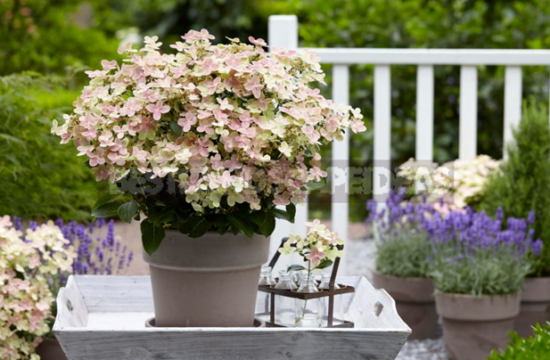
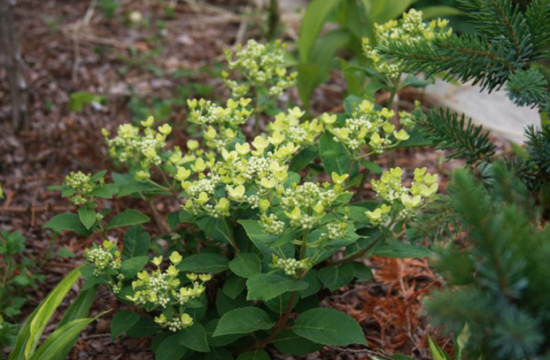
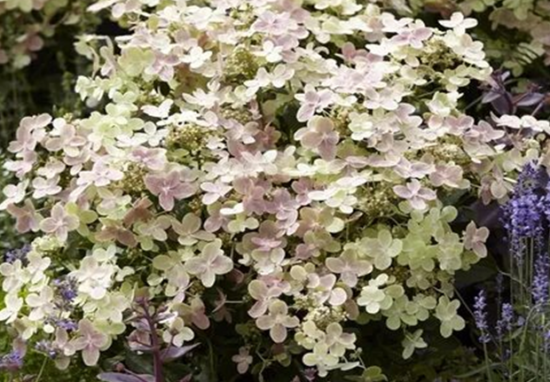
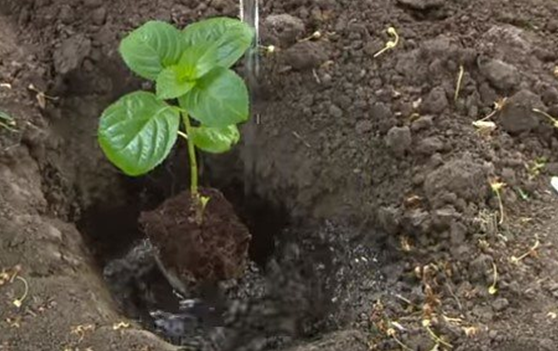
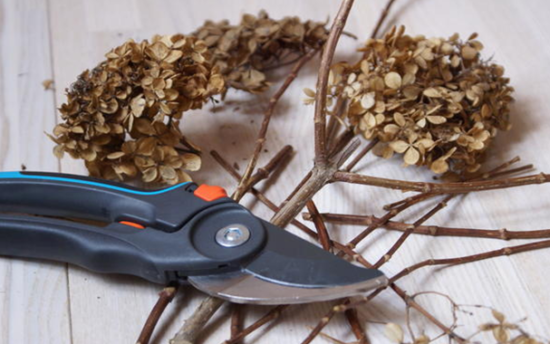
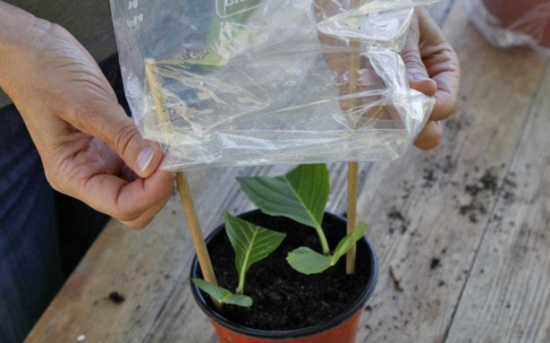
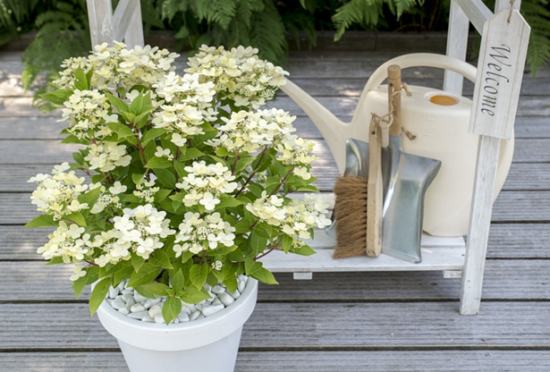

 CUCUMBERS NEVER GET SICK, I'VE BEEN USING ONLY THIS FOR 40 YEARS! I SHARE A SECRET WITH YOU, CUCUMBERS ARE LIKE THE PICTURE!
CUCUMBERS NEVER GET SICK, I'VE BEEN USING ONLY THIS FOR 40 YEARS! I SHARE A SECRET WITH YOU, CUCUMBERS ARE LIKE THE PICTURE! You can dig a bucket of potatoes from each bush. Do you think these are fairy tales? Watch the video
You can dig a bucket of potatoes from each bush. Do you think these are fairy tales? Watch the video
 How our fellow gardeners work in Korea. There is a lot to learn and just fun to watch.
How our fellow gardeners work in Korea. There is a lot to learn and just fun to watch. Eye trainer. The author claims that with daily viewing, vision is restored. They don't charge money for views.
Eye trainer. The author claims that with daily viewing, vision is restored. They don't charge money for views. A 3-ingredient cake recipe in 30 minutes is better than Napoleon. Simple and very tasty.
A 3-ingredient cake recipe in 30 minutes is better than Napoleon. Simple and very tasty. Therapeutic exercises for cervical osteochondrosis. A complete set of exercises.
Therapeutic exercises for cervical osteochondrosis. A complete set of exercises. Which indoor plants match your zodiac sign?
Which indoor plants match your zodiac sign? What about them? Excursion to German dachas.
What about them? Excursion to German dachas.